Abstract
Lentiviral vectors are among the most efficient gene transfer tools for dividing and non-dividing cells. However, insertional mutagenesis has been observed in clinical trials with oncoretroviral vectors and this has prompted detailed study of genotoxicty of all integrating vectors. For many applications, avoiding integration is the most straightforward approach to overcome this problem and is facilitated by the extensive studies of the integrating mechanisms of lentiviruses. Indeed, non-integrating lentiviral vectors have been developed by mutating the integrase gene or by modifying the attachment sequences of the LTRs. In this review, we first consider on the toxicity associated with integration and on lentivirus integrase biology, and discuss the implications of integrase mutant studies for the development of non-integrating lentiviral vectors. We review published data concerning non-integrating lentiviral vectors with particular focus on their residual integration and transgene expression efficiency. Finally, the latest advances in the development of genetic engineering tools derived from non-integrating lentiviral vectors are presented.
Keywords: HIV, integrase, episome, genotoxicity, gene therapy, gene editing, site-specific recombinase, biosafety
Current Gene Therapy
Title: Non-Integrating Lentiviral Vectors
Volume: 8 Issue: 6
Author(s): Chamsy Sarkis, Stephanie Philippe, Jacques Mallet and Che Serguera
Affiliation:
Keywords: HIV, integrase, episome, genotoxicity, gene therapy, gene editing, site-specific recombinase, biosafety
Abstract: Lentiviral vectors are among the most efficient gene transfer tools for dividing and non-dividing cells. However, insertional mutagenesis has been observed in clinical trials with oncoretroviral vectors and this has prompted detailed study of genotoxicty of all integrating vectors. For many applications, avoiding integration is the most straightforward approach to overcome this problem and is facilitated by the extensive studies of the integrating mechanisms of lentiviruses. Indeed, non-integrating lentiviral vectors have been developed by mutating the integrase gene or by modifying the attachment sequences of the LTRs. In this review, we first consider on the toxicity associated with integration and on lentivirus integrase biology, and discuss the implications of integrase mutant studies for the development of non-integrating lentiviral vectors. We review published data concerning non-integrating lentiviral vectors with particular focus on their residual integration and transgene expression efficiency. Finally, the latest advances in the development of genetic engineering tools derived from non-integrating lentiviral vectors are presented.
Export Options
About this article
Cite this article as:
Sarkis Chamsy, Philippe Stephanie, Mallet Jacques and Serguera Che, Non-Integrating Lentiviral Vectors, Current Gene Therapy 2008; 8 (6) . https://dx.doi.org/10.2174/156652308786848012
| DOI https://dx.doi.org/10.2174/156652308786848012 |
Print ISSN 1566-5232 |
| Publisher Name Bentham Science Publisher |
Online ISSN 1875-5631 |
Call for Papers in Thematic Issues
Programmed Cell Death Genes in Oncology: Pioneering Therapeutic and Diagnostic Frontiers (BMS-CGT-2024-HT-45)
Programmed Cell Death (PCD) is recognized as a pivotal biological mechanism with far-reaching effects in the realm of cancer therapy. This complex process encompasses a variety of cell death modalities, including apoptosis, autophagic cell death, pyroptosis, and ferroptosis, each of which contributes to the intricate landscape of cancer development and ...read more
Related Journals
 44
44
- Author Guidelines
- Graphical Abstracts
- Fabricating and Stating False Information
- Research Misconduct
- Post Publication Discussions and Corrections
- Publishing Ethics and Rectitude
- Increase Visibility of Your Article
- Archiving Policies
- Peer Review Workflow
- Order Your Article Before Print
- Promote Your Article
- Manuscript Transfer Facility
- Editorial Policies
- Allegations from Whistleblowers
- Announcements
Related Articles
-
Capturing and Amplifying Impurities from Recombinant Therapeutic Proteins Via Combinatorial Peptide Libraries: A Proteomic Approach
Current Pharmaceutical Biotechnology Targeting miRNAs for Pancreatic Cancer Therapy
Current Pharmaceutical Design Antiangiogenic Therapies in Non-Hodgkin's Lymphoma
Current Cancer Drug Targets Aptamers Overview: Selection, Features and Applications
Current Topics in Medicinal Chemistry Innate T-Cell Immunity in HIV Infections: The Role of Vg9Vd2 T Lymphocytes
Current Molecular Medicine The Development of Pro-Apoptotic Cancer Therapeutics
Mini-Reviews in Medicinal Chemistry ACE2 and Diabetic Complications
Current Pharmaceutical Design Multifunctional Anti-Cancer Nano-Platforms are Moving to Clinical Trials
Current Drug Metabolism Epigenetic Basis of Neuronal and Synaptic Plasticity
Current Topics in Medicinal Chemistry The Role of Hesperidin in Cell Signal Transduction Pathway for the Prevention or Treatment of Cancer
Current Medicinal Chemistry Nanoscale Membrane Organization and Receptor Signaling in T- Lymphocytes
Immunology, Endocrine & Metabolic Agents in Medicinal Chemistry (Discontinued) Antibodies Against Complement System in SLE and their Potential Diagnostic Utility
Current Rheumatology Reviews Prospective Observation for Seven-Year's Highly Active Antiretroviral Therapy in Chinese HIV-1 Infected Patients
Current HIV Research Recent Advances in Cancer Therapy: An Overview
Current Pharmaceutical Design Evolving Treatments in Multiple Myeloma Patients with Renal Failure
Reviews on Recent Clinical Trials Perfusion MRI of Brain Neoplams
Current Medical Imaging Biology of Protooncogene c-kit Receptor and Spermatogenesis
Current Pharmacogenomics Tumor Necrosis Factor Inhibitors as Therapeutic Choice in Psoriasis
Anti-Inflammatory & Anti-Allergy Agents in Medicinal Chemistry Heat Shock Proteins (HSPs) Based Anti-Cancer Vaccines
Current Molecular Medicine Editorial [Hot Topic: Akt Pathway in Oncogenesis and as a Target for Anti-Cancer Therapy (Guest Editor: Jin Q. Cheng) ]
Current Cancer Drug Targets












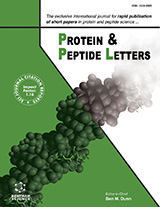
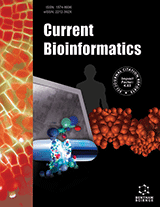
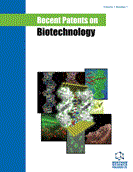
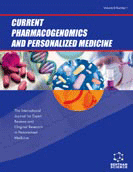
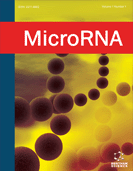
.jpeg)








